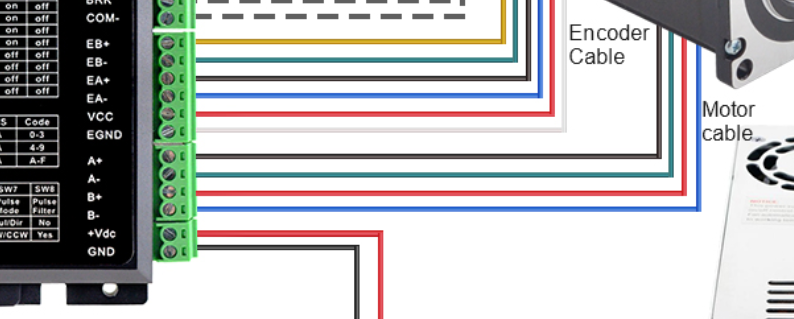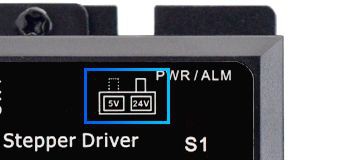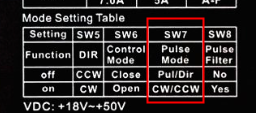Firstly, you can perform the following steps to troubleshoot the problem:
1. Double-check all the wiring. You may need to refer to the manuals of both the stepper motor and driver.
Note: It's better to test the motor and driver separately instead of installing them in your production equipment to eliminate other interfering factors.

Note: The wire colors in the picture are for display only. For the actual correct wiring sequence, please refer to the motor drawing !
2. Check if the power voltage and signal voltage of the driver are correct. In particular, make sure the signal voltage set by the driver matches the voltage provided by the controller. According to our feedback records, 40-50% of the motors do not turn because of this reason. Because the control signal voltage is 5V, and the driver defaults to 24V.

3. Try disconnecting the ENA+/- interface if you have connected it.
4. Power on the driver without sending any pulse signals and check whether the motor is locked. If it is a closed-loop motor, you can set the driver to open-loop mode, usually by setting SW6 to on, and then check whether the motor can run. If it can run, then there is probably a problem with the encoder part.
5. Power on the driver and send pulse signals to see if the driver gives an alarm. Record the number of alarms displayed on the driver and refer to the "Troubleshooting Table" in the driver's manual to check each potential problem. Usually, you can find the "Troubleshooting Table" in the driver's manual.
6. If you have other motors or drivers, you can perform a cross-test to determine if the problem lies with the motor or driver.
7. Check whether the pulse mode setting is correct. Some drivers can be set to the type of input pulse signal (usually SW7), so you need to select the corresponding pulse mode according to the signal type provided.

Discussions
Become a Hackaday.io Member
Create an account to leave a comment. Already have an account? Log In.